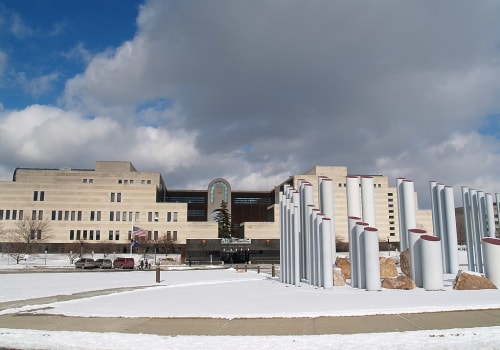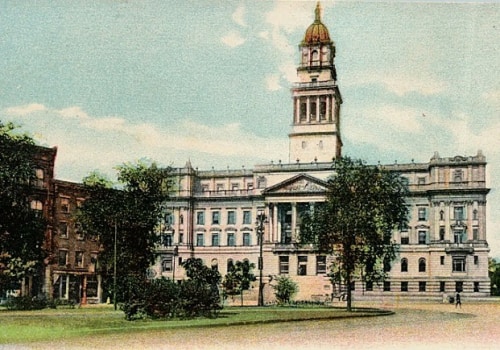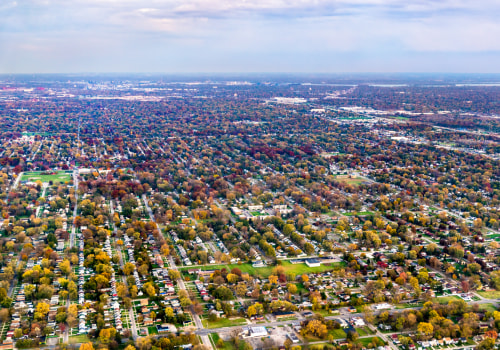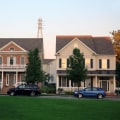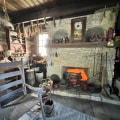As an expert in the field of economics and heritage, I have seen firsthand the impact that heritage has on the economy of Wayne County, Michigan. This diverse and vibrant region has a rich history that has shaped its economy in significant ways. Located in the heart of the Great Lakes region, Wayne County is home to a diverse population and a thriving economy. From its early days as a French trading post to its current status as a major industrial hub, the county's heritage has played a significant role in shaping its economy.
The Early Days: French Trading Post
The history of Wayne County dates back to the 17th century when French explorers first arrived in the area.The county was originally inhabited by Native American tribes, including the Potawatomi, Huron, and Ottawa. However, it was the French who established the first permanent settlement in what is now known as Detroit. The French were primarily interested in trading furs with the Native Americans, and this trade became the backbone of the local economy. The fur trade brought wealth and prosperity to the region, and Detroit quickly became an important trading post for both French and Native American traders. As more settlers arrived in the area, Detroit grew into a bustling city with a diverse population. The French influence can still be seen today in the names of many streets and landmarks in Wayne County.
The Industrial Revolution: A New Era for Wayne County
In the 19th century, Wayne County experienced a major economic shift with the onset of the Industrial Revolution.The county's location on the Great Lakes made it an ideal location for shipping and transportation, and this led to the growth of industries such as steel production, automotive manufacturing, and shipping.One of the most significant events in Wayne County's history was the founding of Ford Motor Company by Henry Ford in 1903. This marked the beginning of the county's dominance in the automotive industry, which would shape its economy for decades to come. The automotive industry brought thousands of jobs to Wayne County and attracted a diverse workforce from all over the world. This influx of workers led to the development of new neighborhoods and communities, further contributing to the county's economic growth.
The Impact of Immigration on Wayne County's Economy
Throughout its history, Wayne County has been a melting pot of different cultures and ethnicities. The county has welcomed immigrants from all over the world, including Europe, Asia, and the Middle East. This diversity has had a significant impact on the county's economy. Immigrants have played a crucial role in the growth of industries such as manufacturing, agriculture, and service.They have brought with them new skills, ideas, and perspectives that have helped to drive innovation and economic growth in Wayne County. One of the most significant waves of immigration to Wayne County occurred during the early 20th century when thousands of Europeans came to work in the automotive industry. This influx of workers not only helped to fuel the county's economic growth but also contributed to its cultural diversity.
The Role of Heritage Tourism in Wayne County's Economy
Today, Wayne County's heritage continues to play a vital role in its economy through heritage tourism. The county is home to numerous historical sites and landmarks that attract visitors from all over the world. One of the most popular tourist destinations in Wayne County is Greenfield Village, a living history museum that showcases life in America during the 19th and early 20th centuries. The village is part of The Henry Ford Museum complex, which also includes a museum dedicated to the history of American innovation and technology. Other popular heritage sites in Wayne County include the Motown Museum, which celebrates the county's rich musical heritage, and the Arab American National Museum, which highlights the contributions of Arab Americans to the county's economy and culture.The Future of Wayne County's Economy
As Wayne County continues to grow and evolve, its heritage will undoubtedly play a significant role in shaping its future.The county's diverse population and rich cultural heritage will continue to attract businesses, tourists, and new residents, contributing to its economic growth. However, as with any region, Wayne County also faces challenges in maintaining a strong economy. The decline of the automotive industry in recent years has had a significant impact on the county's economy, leading to job losses and a decrease in population. To address these challenges, Wayne County is focusing on diversifying its economy by attracting new industries such as healthcare, technology, and renewable energy. The county is also investing in infrastructure and education to support these new industries and create a more resilient economy.
Conclusion
In conclusion, the heritage of Wayne County, Michigan has played a crucial role in shaping its economy. From its early days as a French trading post to its current status as a major industrial hub, the county's heritage has contributed to its economic growth and cultural diversity.As Wayne County looks towards the future, it will continue to draw on its rich heritage to drive innovation and prosperity for generations to come.
